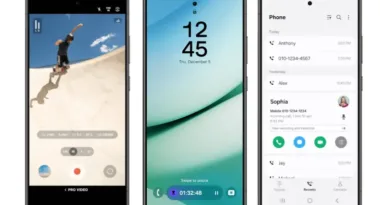The Best of Generative AI in Storytelling: Revolutionizing Writing
In the evolving landscape of creative expression, generative AI in storytelling is emerging as a groundbreaking tool that transforms traditional writing processes. By leveraging artificial intelligence, writers and creators can now craft immersive narratives and innovative content with unprecedented ease and creativity. From generating plot ideas to developing complex characters, generative AI is bridging the gap between imagination and execution, ushering in a new era of storytelling.
How Generative AI is Transforming Storytelling and Writing
1. Enhancing Creativity and Overcoming Writer’s Block
Generative AI tools like OpenAI’s GPT-4 and Sudowrite assist writers by providing creative suggestions, plot twists, and dialogue options. These tools help overcome writer’s block by offering fresh perspectives and ideas, enabling authors to explore new narrative directions effortlessly.
Read More:
- OpenAI GPT-4 – Discover the capabilities of GPT-4 in creative writing.
- Sudowrite – Enhance your storytelling with AI-powered writing assistance.
2. Automating Content Creation
Platforms such as Jarvis (now Jasper AI) and Copy.ai utilize generative AI to produce high-quality content quickly. These tools are invaluable for creating blog posts, marketing copy, and even entire novels, allowing writers to focus on refining their ideas rather than getting bogged down by the initial drafting process.
Read More:
- Jasper AI – AI-driven content creation for writers and marketers.
- Copy.ai – Automate your writing with advanced AI tools.
3. Developing Complex Characters and Plotlines
Generative AI can analyze vast amounts of literature to help develop intricate characters and compelling plotlines. Tools like Character.AI and Plot Generator use machine learning to suggest character traits, backstories, and plot developments that enhance the depth and complexity of narratives.
Read More:
- Character.AI – Create lifelike characters with AI assistance.
- Plot Generator – Generate detailed plotlines for your stories.
Real-Life Applications of Generative AI in Storytelling
1. AI-Driven Screenwriting
Companies like ScriptBook use AI to analyze scripts for potential success, helping writers fine-tune their screenplays. By predicting audience reactions and box office performance, AI provides valuable insights that shape the development of compelling stories.
Read More:
- ScriptBook – AI analysis for screenwriting and script development.
2. Interactive Storytelling in Video Games
Generative AI enhances the storytelling experience in video games by creating dynamic narratives that adapt to player choices. Games developed with AI-driven story engines, such as AI Dungeon, offer unique and personalized adventures for each player.
Read More:
- AI Dungeon – Experience interactive storytelling powered by AI.
3. Personalized Content for Readers
Platforms like Reedsy utilize AI to offer personalized writing tips and story development tools, catering to individual writer’s needs and styles. This personalized approach helps writers refine their craft and produce more engaging content.
Read More:
- Reedsy – Personalized tools and resources for writers.
Benefits of Using Generative AI in Writing
Increased Efficiency: Automates repetitive writing tasks, allowing creators to focus on high-level storytelling.
Enhanced Creativity: Provides innovative ideas and suggestions that expand creative horizons.
Cost-Effective: Reduces the need for extensive research and drafting, lowering the time and financial investment in content creation.
Scalability: Enables the production of large volumes of content without compromising quality.
Challenges and Considerations
While generative AI offers numerous advantages, it also presents certain challenges:
Quality Control: Ensuring AI-generated content meets desired quality and coherence standards.
Ethical Concerns: Addressing issues related to authorship and the originality of AI-assisted work.
Dependency: Avoiding over-reliance on AI tools, which might stifle human creativity and critical thinking.
The Future of Generative AI in Storytelling
As generative AI continues to advance, its integration into storytelling and writing will deepen. Future developments may include:
- Enhanced Emotional Intelligence: AI systems capable of understanding and generating emotionally resonant content.
- Multimedia Integration: Combining text, audio, and visual elements to create more immersive storytelling experiences.
- Collaborative Writing: Seamless collaboration between human writers and AI, fostering a synergistic creative process.
Conclusion:
The advent of generative AI in storytelling and writing marks a significant shift in the creative landscape. By augmenting human creativity and streamlining the writing process, AI empowers writers to explore new narrative possibilities and bring their stories to life with greater efficiency and innovation. As technology evolves, the collaboration between human imagination and artificial intelligence will continue to redefine the art of storytelling, making it more accessible, dynamic, and engaging than ever before.
Also Read: The Best of AI in Game Development – Transforming Virtual Reality






